
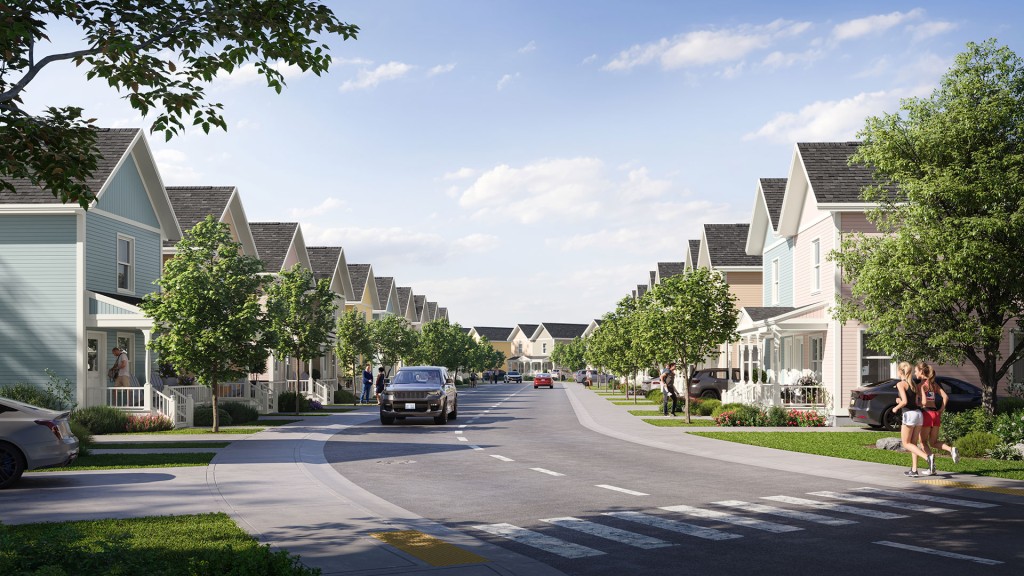 Developments like Dorsey Estates in Ypsilanti are possible with predevelopment assistance. Courtesy photo.
Developments like Dorsey Estates in Ypsilanti are possible with predevelopment assistance. Courtesy photo.
Block by Block is a solutions journalism series that is supported by IFF, CEDAM and Invest Detroit, and is focused on community development leaders and initiatives in Michigan, Ohio and Indiana.
Maybe it’s a boarded-up factory, a neglected brownfield, a long-vacant downtown storefront, or the empty upper stories above a once-busy shop — in every Michigan city and town, there are buildings and lots people walk by, picturing what it could become.
“There’s at least one property people think, ‘This could be something better,’” says Michelle Parkkonen, managing director of the technical assistance team, (Place Programs & Services), at the Michigan Economic Development Corporation (MEDC).
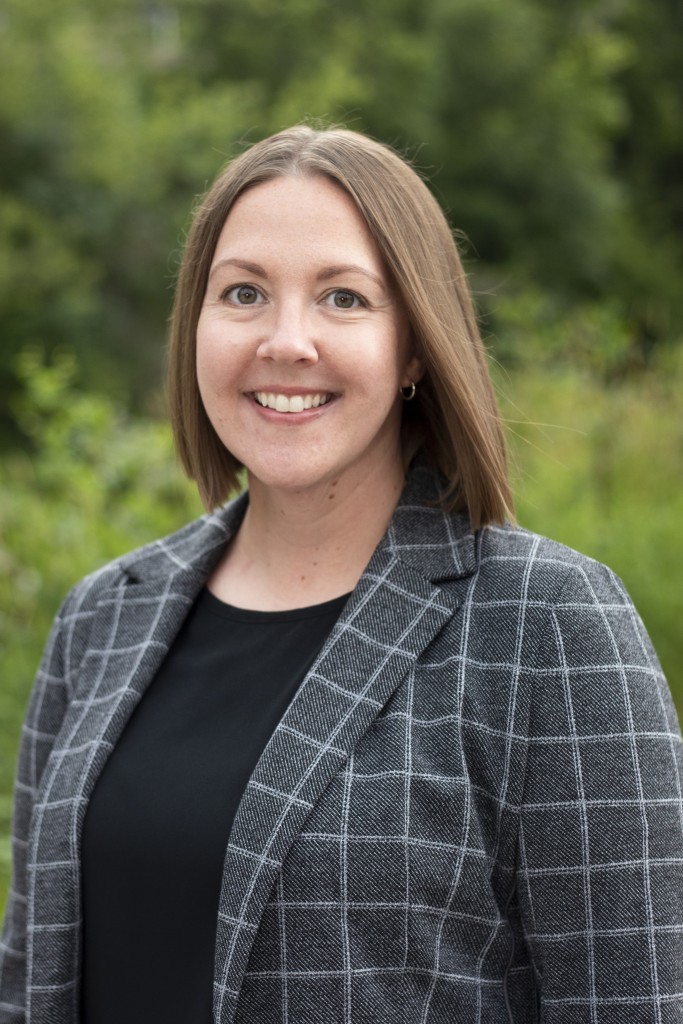 Michelle Parkkonen, Managing Director, Technical Assistance Programs at MEDC is eager to help more developers navigate predevelopment assistance. Courtesy photo.
Michelle Parkkonen, Managing Director, Technical Assistance Programs at MEDC is eager to help more developers navigate predevelopment assistance. Courtesy photo.
While it’s easy to imagine the potential, transforming these places is rarely straightforward. From restrictive zoning to environmental questions and financial uncertainty, obstacles abound. That’s where, Parkkonen explains, predevelopment assistance is impactful. By helping communities identify opportunities, remove barriers, and map out practical steps, this early-stage support is crucial for turning local vision into reality.
‘); AdButler.ads.push({handler: function(opt){ AdButler.register(181918, 1042766, [1,1], ‘placement_1042766_’+opt.place, opt); }, opt: { place: plc1042766++, keywords: abkw, domain: ‘ads.empowerlocal.co’, click: ‘CLICK_MACRO_PLACEHOLDER’ }}); ]]>
“Pre-development assistance is designed as whatever a community needs to remove a barrier to development or redevelopment,” she says. “This support is essential for communities to take the next step in revitalizing their neighborhoods.”
This could look like conducting a parking analysis revealing room for more housing, environmental testing, running financials, or engaging residents to ensure redevelopment fits the community’s vision. Centered on partnership and collaboration, the process involves a lot of problem-solving. Parkkonen’s team works alongside local governments, developers, and nonprofits, including the Community Economic Development Association of Michigan (CEDAM).
“It’s really exciting to have CEDAM as a partner to connect communities to the various consultants and to help project manage the vision for some of these predevelopment assistance projects,” Parkkonen says.
The Redevelopment Ready Communities Toolkit: A Framework for Success
The MEDC’s Redevelopment Ready Communities (RRC) toolkit is key to predevelopment assistance. Originally launched by the Michigan Suburbs Alliance in the mid-2000s, it was acquired and expanded statewide by the MEDC in 2012. Now, over 300 communities — ranging from bustling cities to villages of just a few thousand people — have participated.
The RRC toolkit is a set of best practices designed to help communities of all sizes. Communities that reach ‘certified designation’ gain access to even more resources, including the expertise of the Redevelopment Services team. It covers all the bases, from updating master plans, improving public engagement, overhauling zoning regulations, streamlining development reviews, and sharpening economic development strategy.“The approach is never cookie cutter. Every community has its unique character and challenges,” Parkkonen says. “What the toolkit offers is a flexible framework, but our support is always hands-on and adapted to local needs.”
One of the most inspiring aspects of Parkman’s work is the direct impact it has. She points to Marquette County in Michigan’s Upper Peninsula as a prime example. There, her MEDC colleague, Jen Tucker, has initiated “emerging developer meetups.” These informal gatherings are opportunities for aspiring developers, experienced professionals, and community partners to meet, share a meal, and discuss opportunities.
A familiar face is Ben Argall, founder of Argall Real Estate Group and NextHome Superior Living, based in Negaunee, MI. He’s commonly known as “Westend Ben,” having been born and raised in the west end of Marquette County.
 Ben Argall is one of Michigan’s rising real estate stars. Courtesy photo.
Ben Argall is one of Michigan’s rising real estate stars. Courtesy photo.
“He is such a wonderful person and personality and is such a huge advocate for the West End being just a phenomenal place for people to live and work and visit,” Parkkonen says. “He is a recipient of a Build MI Community grant and we’ve worked on predevelopment assistance with him. He’s a shining star.”
From Gray to Gold
Like Parkkonen, Argall champions predevelopment assistance because it can mean the difference between “just another building and a catalyst for community growth.”
His first project is his company’s office at 209 Gold Street in downtown Negaunee. The building was once written-off by most locals until Argall purchased it in 2022. Over the course of the next year, he tackled a full-scale renovation, funded in part by nearly $250,000 from the MEDC’s Build MI Communities grant. Additional contributions from the local Downtown Development Authority, land bank, and brownfield programs brought the total support to around $300,000.
“It was just an ugly building that you would never look at. Now people think it’s one of the most gorgeous buildings that’s been renovated in downtown Negaunee,” Argall says. “When you walk in now, people’s eyes light up. It’s completely transformed from what it was.”
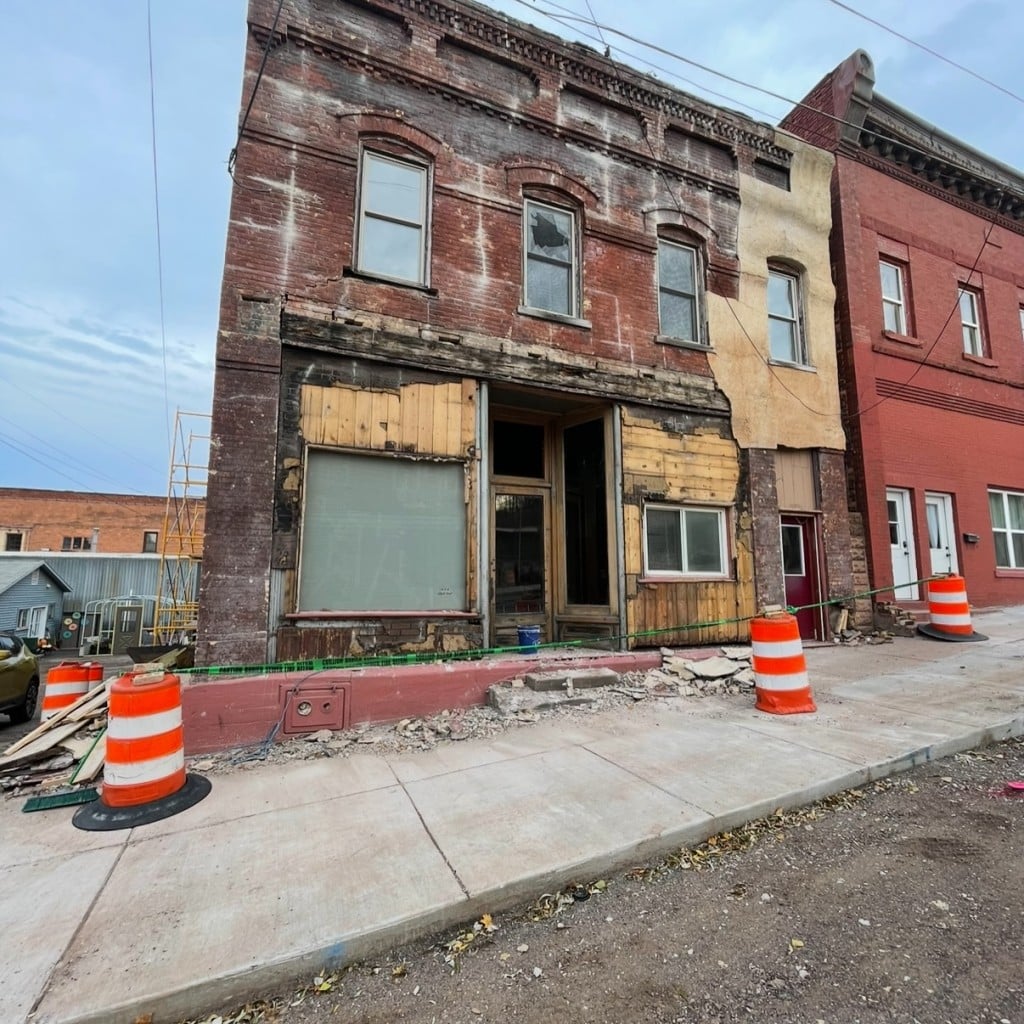 Before photo of Ben Argall’s first project at 209 Gold Street in Negaunee. Courtesy photo.
Before photo of Ben Argall’s first project at 209 Gold Street in Negaunee. Courtesy photo. 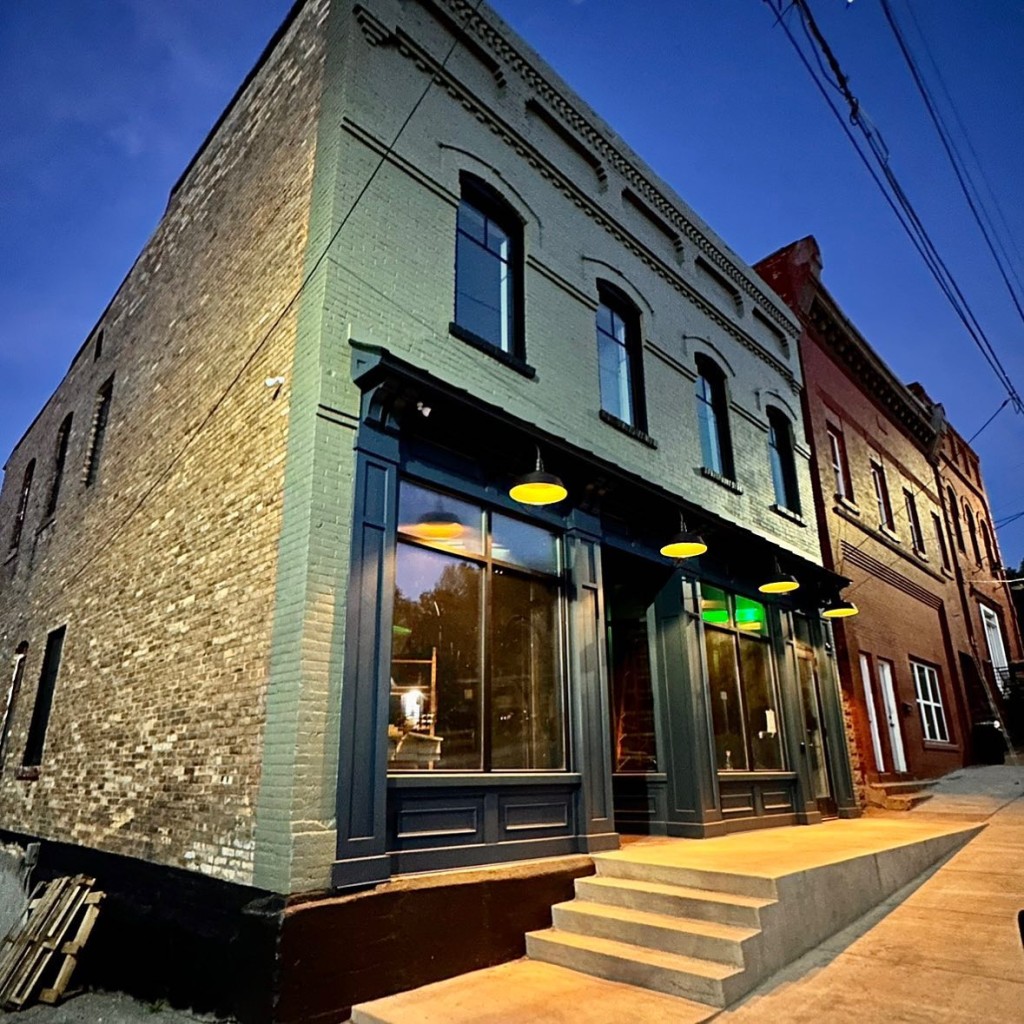 After photo of Ben Argall’s first project at 209 Gold Street in Negaunee. Courtesy photo.
After photo of Ben Argall’s first project at 209 Gold Street in Negaunee. Courtesy photo.
He explains that the funding assistance enabled him to go beyond the basics. It cleared a way to completely transform “an eyesore to a real point of pride for the whole community.”
“The building has white oak floors, solid oak doors that are eight feet tall, beautiful countertops — details nobody ever expected in a place like this,” he says. “There’s no way I could have done the building how I planned without support. Without grants, you really can’t take on these kinds of projects in a small town.”
Argall’s second major project, located at 208 Silver Street, is planned as a new apartment complex providing 12 residential units across three stories. The initiative emerged as a direct response to the loss of four apartments during the renovation of a past project, and as a solution to the area’s wider housing shortage.
“It was an old, kind of a brothel, but a boarding house-type setup, and it was just a blighted property,” he says. “I don’t know how people were living in there, but they were and there was no way to save the building.”
When Argall acquired the site, he knew that restoring safe, quality housing there would require starting from scratch — the presence of asbestos required a full demolition. To launch the $3 million redevelopment, he secured essential predevelopment assistance. The Michigan State Land Bank stepped in to fund the $80,000 demolition. Additional grants covered the costs of architectural drawings and redevelopment planning.
“A lot of these programs, like the MEDC and the Land Bank all kind of stack on each other,” he says. “That’s what makes the impossible possible.”
Predevelopment assistance isn’t just helpful — it’s absolutely essential
At the heart of some of the state’s most innovative housing solutions is Renovare Development, a small, woman-owned firm headquartered in downtown Ypsilanti. The mission of the team of five is unwavering: “to create transformational projects that serve great community needs” and promote generational wealth for Michigan families. For Renovare Development, predevelopment assistance isn’t just helpful — it’s absolutely essential.
“We really consider ourselves the convener — bringing together different stakeholders to focus predominantly on housing,” says Shannon Morgan, Renovare Development’s president and co-founder. “We feel that this model best represents the opportunity to promote generational wealth throughout Michigan, and meet the needs of families who are often left out of the traditional housing market.”
 Shannon Morgan, President and Co-Founder of Renovare Development would like to see more developers take advantage of predevelopment assistance. Courtesy photo.
Shannon Morgan, President and Co-Founder of Renovare Development would like to see more developers take advantage of predevelopment assistance. Courtesy photo.
Renovare currently has several projects at various stages of completion across Michigan, reflecting a wide range of partnerships. In Ypsilanti, Renovare joined forces with Whirlpool and Harbor Habitat for Humanity on Dorsey Estates, a city-owned development aimed at lifting residents out of poverty.
“I’ve worked in community development for almost 30 years, working with really creative capital stacks to make housing happen across the spectrum,” Morgan says. “Predevelopment assistance can really range depending on the scope and final project, but it’s generally a lot of money, and oftentimes can be several hundreds of thousands of dollars. We would not have the financial wherewithal to do the projects we’re in without it. It would be impossible.”
This collaborative approach, she stresses, is essential for advancing complex projects that serve genuine community needs, such as the Dorsey Estates housing project in Ypsilanti. The project addresses the “missing middle” by offering modest, well-designed homes that fill the gap between luxury housing and subsidized options. Predevelopment on a project that could easily fall through is extremely risky, yet they have the most impact for generations.
“We just recently had a ribbon-cutting at the City of Ypsilanti. If you go to the City of Ypsilanti’s Facebook, which traditionally gets no attraction, when they posted that development, I think it’s got 180,000 views right now, 3,000 likes and over 450 shares,” Morgan says. “There was a question on the demand for smaller footprint homes in Southeast Michigan. Half of the Dorsey units, which were 23 of the 46, sold-out with a wait list of several hundred people.”
Morgan shares that the complexity of making a project like Dorsey Estates a reality cannot be overstated. Once a brownfield, there was a lot of cleanup needed before building could even start, with numerous unexpected costs and many hoops to jump through for approvals.
“If you look at something like Dorsey in scale, it wasn’t a tremendously large project. It was only 46 units, but it still took several years to get through the public approval process,” she says. “We were lucky enough to raise predevelopment through the Ann Arbor Community Foundation, and then we worked closely with the city as a partner to overcome challenges.”
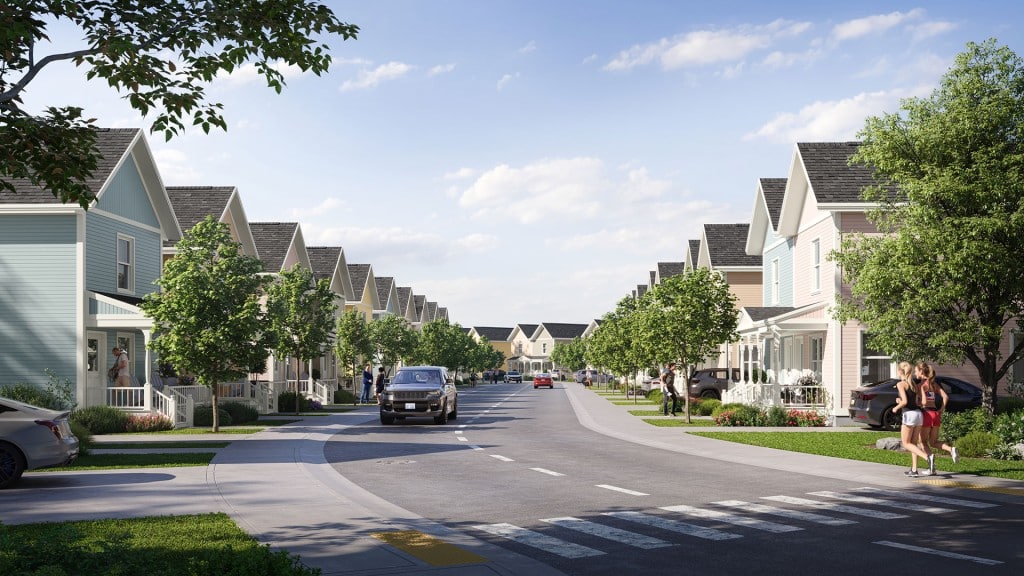 Renovare Development used predevelopment assistance to create “missing middle” homes in the coveted Dorsey Estates in Ypsilanti. Courtesy photo.
Renovare Development used predevelopment assistance to create “missing middle” homes in the coveted Dorsey Estates in Ypsilanti. Courtesy photo.
“Assembling the funding for a project like Dorsey meant reaching out to a wide range of partners, including major supporters like Whirlpool, who really stepped up to help fill those critical gaps,” Morgan adds. “From a developer standpoint, these sites are risky. These kinds of projects just aren’t what most developers want to touch because they cost a lot up-front and don’t leave much room for profit.”
Looking ahead, Morgan suggests anyone seeking predevelopment support explore grants from organizations similar to the Ann Arbor Community Foundation — which provided crucial support for Dorsey —as well as resources from state agencies and connections with Community Development Financial Institutions (CDFIs). She also recommends national initiatives like Smart Growth America’s Housing Solutions SPRINT program for securing financing. These pathways can make a difference for community projects, just as direct support from partners like Whirlpool made a difference for Dorsey Estates.
At MEDC, Parkkonen and her team look forward to supporting more developers in the future. She notes that currently, in many Michigan towns, especially smaller ones, limited staff are stretched thin just handling daily operations. This leaves little room for long-term planning. However, she cautions that careful planning, even in uncertain times, ensures Michigan will be ready to capitalize when opportunities arise.
‘If you fail to plan, you plan to fail. Now is a great time to plan and remove barriers. When conditions improve, we’ll be able to put these plans into action,” she says. “Our communities will have projects in the pipeline, visions aligned with resident input, and the groundwork laid.”
As more places achieve RRC certification, Parkkonen is also focused on nurturing more local leaders and more collaboration.
“If you love your community and want to invest in it, we’re here to help you brainstorm, connect, and make it real,” she says, “Building strong places is a long game. But, when you see a new business open, an apartment get filled, or local people investing their heart into their hometown, it’s worth every effort.”





